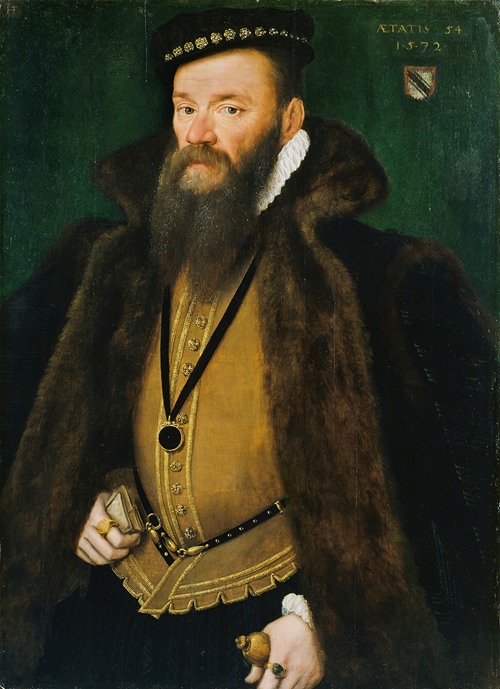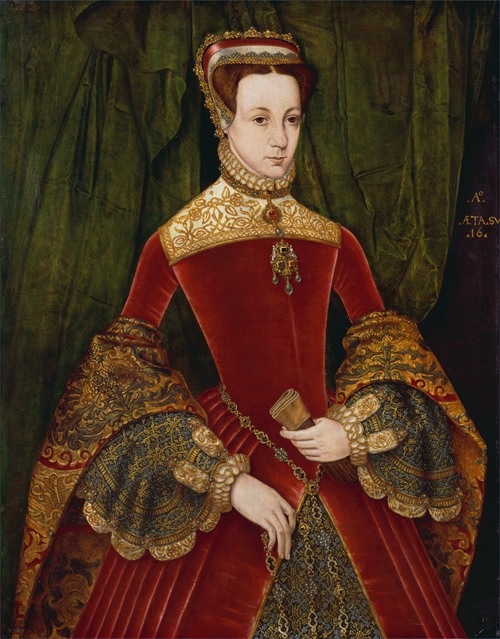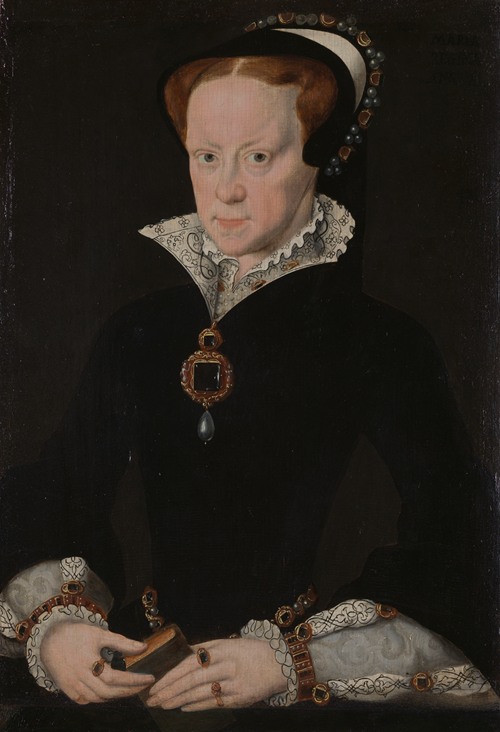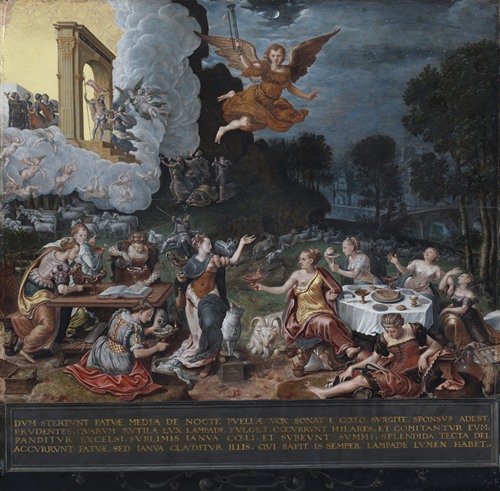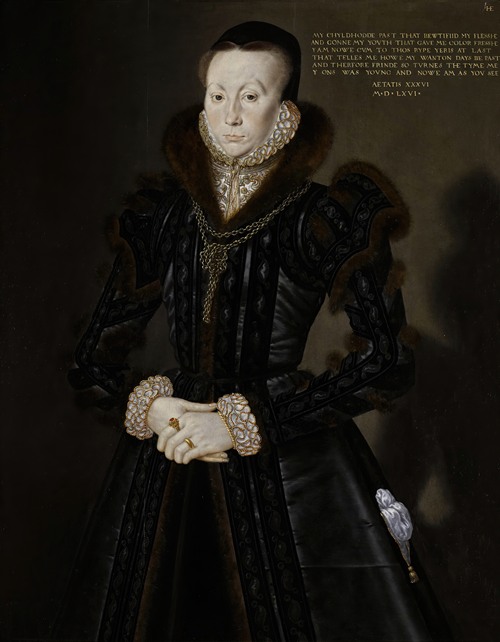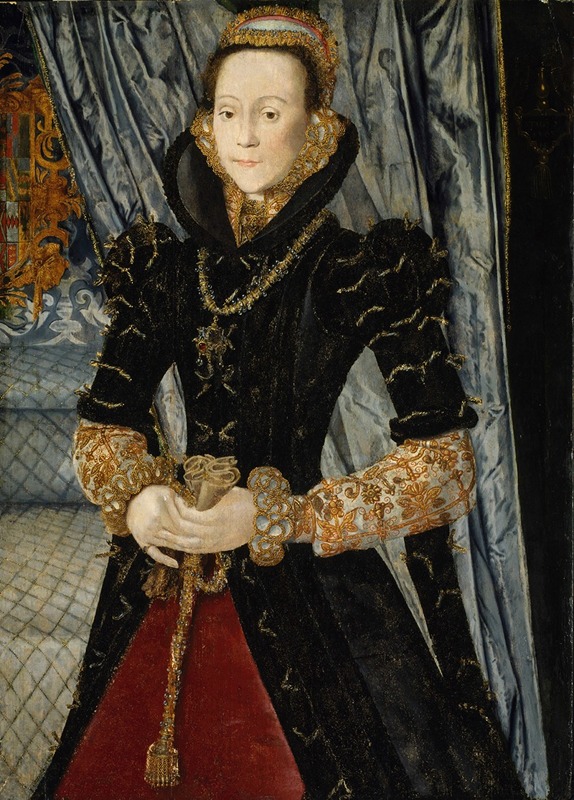
Hans Eworth was a Flemish painter active in England in the mid-16th century. Along with other exiled Flemings, he made a career in Tudor London, painting allegorical images as well as portraits of the gentry and nobility. About 40 paintings are now attributed to Eworth, among them portraits of Mary I and Elizabeth I. Eworth also executed decorative commissions for Elizabeth's Office of the Revels in the early 1570s.
Nothing is known of Eworth's early life or training. As ″Jan Euworts″, he is recorded as a freeman of the artists' Guild of St Luke in Antwerp in 1540. A ″Jan and Nicholas Ewouts, painter and mercer″ were expelled from Antwerp for heresy in 1544 and scholars generally accept that this Jan is the same individual. By 1545 Eworth was resident in London, where he is well recorded (under a wide variety of spellings) from 1549.
Eworth's earliest surviving works also date from 1549 to 1550. These include the allegorical portrait of Sir John Luttrell with the goddess Pax, commemorating Luttrell's military exploits and the Treaty of Boulogne (24 March 1550) which finally brought peace between England, Scotland, and France after the long wars known as the Rough Wooing. The original – signed with the "HE" monogram Eworth consistently used — was donated to the Courtauld Institute of Art by Lord Lee of Farnham in 1932. The painting was in "badly damaged" condition when it was donated to the institute, although it has subsequently been conserved and restored.
